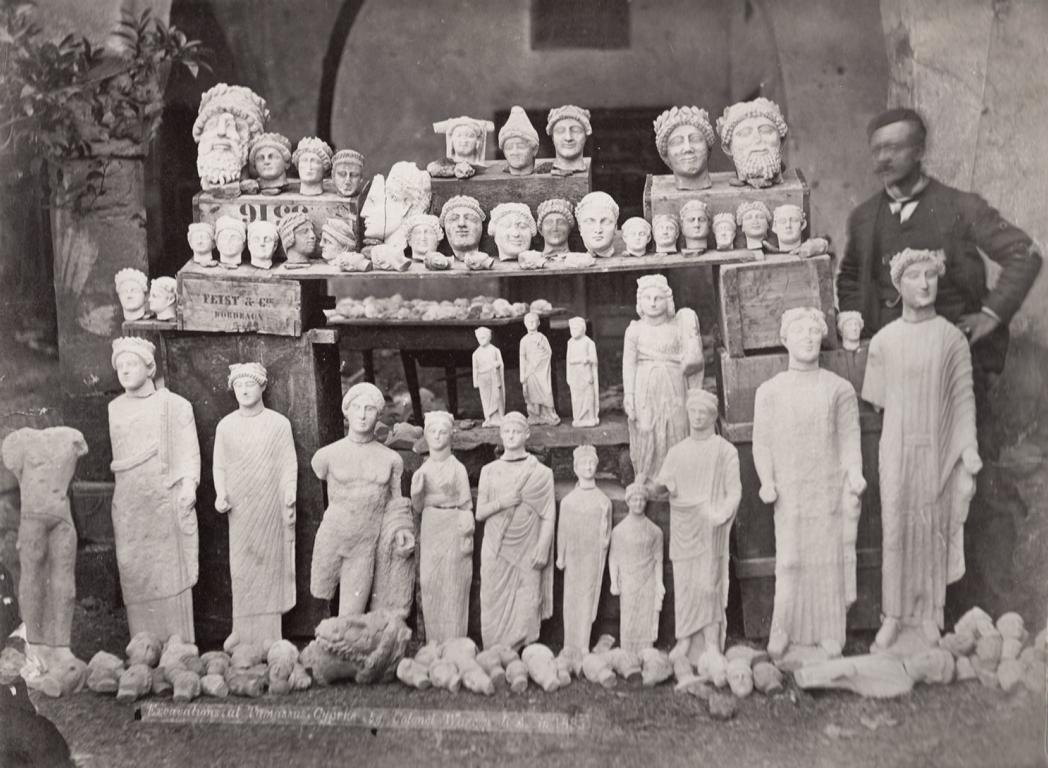Since 2020 AMRICHA has been funding a project by the Universities of Frankfurt am Main and Kiel, which is dedicated to researching the Sanctuary of Apollo in Pera-Frangissa (Tamassos). It pursues the goal of examining the history, spatial structuring and ritual use of a rural Cypriot cult site through detailed excavation and documentation according to modern standards.
The history of the project
When the German archaeologist Max Ohnefalsch-Richter received his doctorate in Leipzig in 1891 with a thesis on Cypriot “Cultusstätten”, he was able to list 72 sanctuaries that were spread across the island. Due to the undisturbed preservation and the extremely rich finds, he described the sanctuary of Apollo in Frangissa as the most important of them. This site, which is inland near the ancient city of Tamassos, he discovered himself in 1885 and examined it in an excavation campaign that lasted only for 17 days. He was able to uncover more than 500 statues made of limestone or terracotta, some of colossal size, well over 3 meters high and often of high artistic quality and excellent preservation. He wanted to publish the results of his excavation in a detailed and richly illustrated publication. However, this never happened for various reasons. In the Leipzig dissertation of 1891 he only published a floor plan that reflects the shape of the sanctuary: It was a walled, open courtyard with a central building with a semicircular apse, which, according to its interpretation, is to be addressed as a roofed main cult area. In his two-volume work “Kypros, die Bibel und Homer”, published two years later, Ohnefalsch-Richter also published two small limestone figurines, which, however, could hardly convey the impression of the wealth of the finds. The most important finds could be exported out of the country due to the then applicable law and they largely disappeared from the scene. When the Cyprus Museum in Nicosia was reorganized, the finds that remained in Cyprus lost their location and can therefore only be identified to a small extent in the Cyprus Museum’s rich collections. Finally, the excavation site of Frangissa, which was backfilled and leveled in 1885 immediately after the archaeological work was completed, was soon forgotten. Until recently, the exact location of the sanctuary was unknown and various contradicting localizations have been given in the scientific literature.
A research project by Dr. Matthias Recke (Goethe University Frankfurt am Main) has set the goal of identifying and publishing the statues found in the sanctuary. So far, objects from Frangissa have been found in seven different museums around the world and over 80% of the finds have been brought together again. When processing the finds, however, it quickly became apparent that a comprehensive picture of the history of this important sanctuary can only be created if the site itself is explored again and the Ohnefalsch-Richter excavation is uncovered.
The evaluation of archive material from German, English and Canadian archives and intensive inspections on Cyprus itself made it possible to limit the location of the sanctuary to a narrow valley in the southwest of the modern village of Pera Orinis. However, since there were no more visible remains in the area, the exact location could not be determined in this way. The preliminary results, however, gave rise to justified hopes that the site of the old excavation could be found again using modern research methods and that a new excavation could be taken in consideration.
When AMRICHA and Dr. Matthias Recke first met in April 2019, it soon became clear that there was potential for a fruitful collaboration between Leipzig and Frankfurt, and work on site was already planned for the coming year. The universities of Kiel and Nicosia were subsequently won over as further cooperation partners for the implementation of an initial prospecting campaign.
Questions and objectives
The aim of the project is to process and document the old excavation from 1885 according to modern standards. A renewed investigation of this site is very desirable for various reasons.
The excavation report by Ohnefalsch-Richter shows that the numerous bases of the figures that were found in situ remained on site when the area was backfilled after the excavations had ended. A detailed recording of these statue bases and in particular their footprints therefore promises that the relationship between the figures and their original bases and thus the chronological sequence of their installation can be recognized. This would result in completely unique insights into the consecration practice and the spatial structuring of a sanctuary, which has not yet been found anywhere in Cyprus in this way.
The documents from the excavation that have been preserved also indicate that the sanctuary has not been completely uncovered. Trial trenches, which are documented in a sketch, show the approximate extent, which apparently extends far beyond the excavated area. Accordingly, there is hope that the processing of the old excavation will be supplemented in the future by new excavations of further sanctuary areas. Particular attention will be paid to pottery, because this genus was completely ignored during the excavations by Ohnefalsch-Richter; so far not a single sherd from Frangissa is recorded! A careful analysis of the pottery found and their stratification should provide extensive information about the development over time and the ritual use of the sanctuary.
Outlook
The scientific activities funded by AMRICHA not only financially but also personally have clearly confirmed the location of the Apollon sanctuary of Frangissa in 2020, which was discovered by Ohnefalsch-Richter in 1885 and examined in an emergency excavation. In the course of this first 2020 campaign, a surveying network has already been set up and a local GIS system created. A georeferenced 3D model of the valley was created by flying a UAV over the entire area and the basis for an elevation map was laid. Our intention is to start a regular excavation there in spring 2021.
The universities of Frankfurt (Dr. M. Recke) and Kiel (PD Dr. P. Kobusch) plan to carry out the excavations as part of a field school in order to give students of classical archeology an insight into practical field work with the most modern methods of digitization and documentation. Technical support will again be provided by AMRICHA, who will also oversee the conservation work of finds and architectural elements (Alexander Gatzsche M.A.). We are again grateful for the support from the Department of Antiquities Cyprus and the University of Cyprus, who not only actively supported the 2020 campaign, but also offer perspectives for a long-term, scientifically significant and promising project.
Weitere Projekte
Terracotta horse head 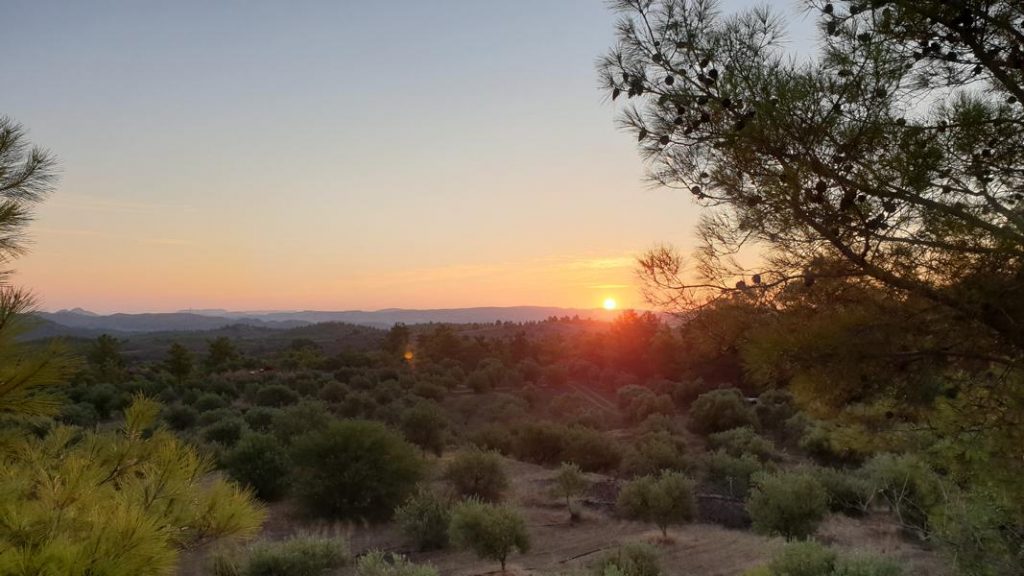
Shortly before starting work 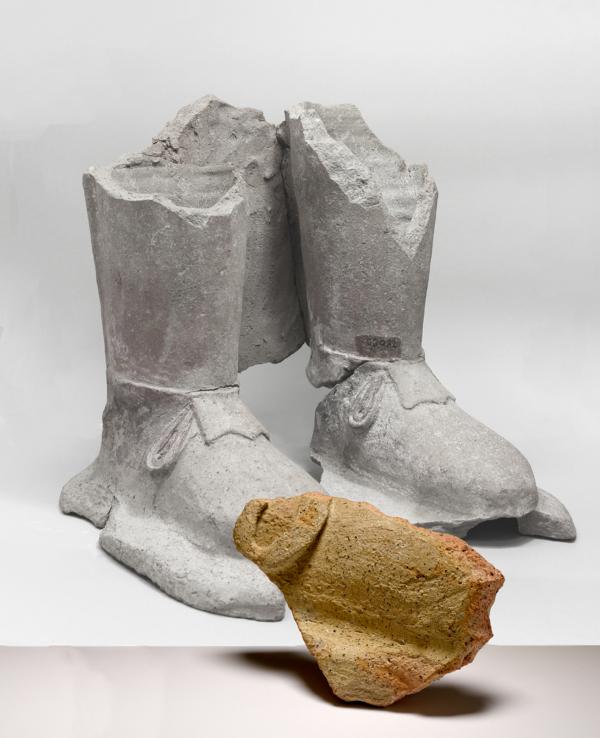
Fragments of life-size terracotta statues from excavations in 1885 and 2020 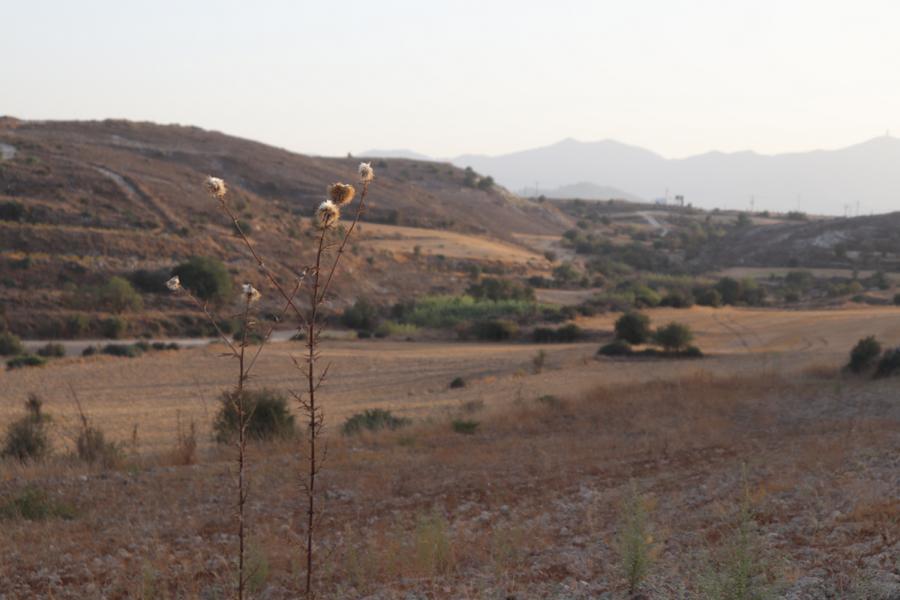
View over the valley of Frangissa 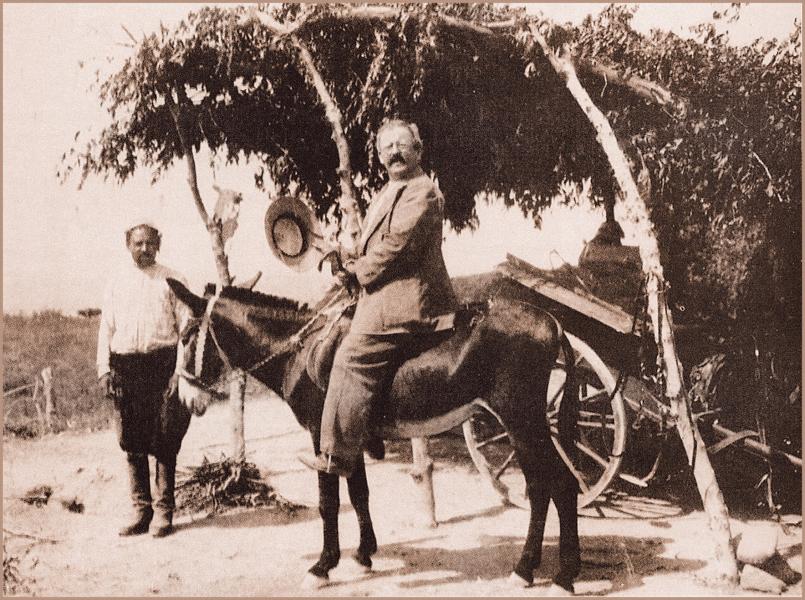
Max Ohnefalsch-Richter (1910) 
The stone plan of the Sanctuary of Apollo published in 1891
